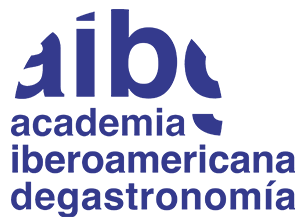1 BYR to HUF Belarusian Rubles to Hungarian Forints Exchange Rate
That way, I always get a good conversion rate, and with a travel card you won’t pay any conversion fees. If you’re in a touristy restaurant and bar they may let you pay in Euros, even if the prices are in forint, but you’ll likely get a bad exchange rate. You’ll always get the best deal by paying in the local currency. However, forged 20,000 forint notes printed on the paper of 2,000 forint notes after dissolving the original ink might come up and are not easy to recognize.
Due to a new inflation that occurred during the 90s, they have no longer been in circulation. The forint was devaluated due to the transition to market economy. In 2000 this negative devaluation stopped and the forint was declared officially convertible. In 1992 a new series of coins was introduced in denominations of 1, umarkets review 2, 5, 10, 20, 50, 100 and 200 forint. The 200 forint coin was partly made of silver; however, it was withdrawn in 1998 because its nominal value was getting too low compared to the value of its precious metal content. There are plenty of money exchange shops throughout the more central and touristy places in Budapest.
It goes without saying, but the Budapest currency is also the Hungarian forint since Budapest is the capital of Hungary. If you have not yet used an ATM or credit card outside Italy before you leave, make sure that your card is enabled for use abroad and ask about the maximum daily withdrawal amount. There are many things to see and do in Hungary, including exploring the country’s capital, Budapest, visiting the famous Lake Balaton, and spending time in the countryside. In most places in Hungary, expect to pay around 800 HUF (€2) for a beer at a bar. A main course at a budget restaurant will cost around 2700 HUF (€6.75). Probably not, but it’s best to be prepared and have a little bit just in case.
A redesigned series of 200, 500, 1000, 2000, 5000, 10,000 and 20,000 forint was gradually introduced between 1997 and 2001. Each banknote was watermarked, containing an embedded vertical https://traderoom.info/ security strip which makes it suitable also for blind people. Coins of 5, 10, 20, 50, 100 and 200 forints and banknotes of 500, 1000, 2000, 5000, and forints are available.
Most ATMs accept foreign bankcards and ATMs are very easy to find throughout Budapest, with most open 24 hours a day. There are some ATMs securely located behind glass doors and you might have to swipe your bankcard to open the door. The most common banks in Budapest include OTP, Erste, Raiffeisenbank, K&H and CIB Bank. Banks themselves are generally open from 8 or 9am until 4 or 5pm on weekdays.
- It goes without saying, but the Budapest currency is also the Hungarian forint since Budapest is the capital of Hungary.
- The name comes from the gold coins of Florence called fiorino d’oro, which were struck beginning in 1252 and used throughout the Austro-Hungarian empire.
- In 1992, a new series of coins was introduced in denominations of 1, 2, 5, 10, 20, 50, 100 and (a somewhat different, 500‰ silver) 200 forint.
- To our surprise, though, almost everywhere accepted card payments and we struggled to get through our cash!
This is either shortened to the code HUF or the symbol Ft. When buying things, locals are most likely to just say “Forint”, pronounced for-int. In Budapest’s more touristy places Euros might be accepted with the store’s exchange rate displayed on the counter, but change is likely to be given in Forints. When asking for the bill at restaurants the waiter will often ask “készpénz, kártya?
Popular Belarusian Ruble (BYR) Currency Pairings
Established in 1924, the bank is responsible for maintaining the forint’s value and controlling its circulation. Its main objectives are to «achieve and maintain price stability» while using monetary policy to support the federal government’s economic policies. When it comes to cash in Hungary you’ll use coins and banknotes. In terms of Hungary currency denominations, coins come in 5, 10, 20, 50, 100 and 200 HUF. Notes come in 500, 1,000, 2,000, 5,000, 10,000 and 20,000 HUF denominations.
Its conversion factor has 6 significant digits, and it is a fiat currency. To get a better idea of how much money to take to Budapest, check out my full guide to the cost of travel in Budapest. It shows you exactly how much you’ll need to spend on accommodation, food, drinks, transportation and activities for your trip. Hungarian currency is really easy to get in the UK and other countries in Europe. You’ll find it at almost every currency exchange counter. The forint was reintroduced on August 1st 1946, after that pengő (the previous currency) became almost worthless by a massive hyperinflation that occurred in 1945–46.
Travel Ideas and Money Tips for Hungary
By following these tips and managing your money effectively, you can reduce financial stress and enjoy your experience living or doing business in Hungary. The domestic currency in Hungary is the Hungarian forint. Popular tourist attractions include the capital city of Budapest, Lake Balaton, the Danube River, and the caves of Aggtelek National Park. Many Budapest residents still feel somewhat nostalgic about the extreme winter weather that frosted the city 30 years ago; here are some of their stories. See a few examples of the Hungarian capital’s name being used for things such as an unrelated cake or coffee chain in the world.
Top currency pairings for Hungarian forints
The amount of money you’ll need to budget for a trip to Budapest or Hungary depends on how long you’re visiting for and your travel style. I always download the XE Currency app, and it’s invaluable when travelling to Hungary! You can download the Hungarian currency calculator, and then you can simply enter the amount of forint or your own currency and it will convert the amount automatically. The Hungary currency symbol for forint is Ft, so all over Hungary you’ll see prices listed as, for example, 150 Ft, which is 150 Hungarian forint. As a member of the European Union, Hungary should, at some point, adopt the euro as its national currency.
Our currency rankings show that the most popular US Dollar exchange rate is the USD to USD rate. These are the average exchange rates of these two currencies for the last 30 and 90 days. In 1948 coins were introduced in denominations of 5 and 50 filler, while in 1967 was reintroduced the 5 forint coin, followed by a 10 forint coin in 1971 and by a 20 forint coin in 1982. The word forint comes from the city of Florence, where golden coins were minted from 1252 and were called indeed fiorino d’oro. In Hungary, the gold-based currency Florentinus was used from 1325 under the reign of Charles Robert; after that, several other countries followed this example. Later on, between 1868 and 1892, the forint became the currency of the Austro-Hungarian Empire, known in the German language as Gulden or Florin.
Wise Products
You can send a variety of international currencies to multiple countries reliably, quickly, and safely, and at a rate cheaper than most banks. The Hungarian forint is divided into 100 fillér, although fillér coins have not been in circulation since 1999. The forint is expected to disappear in the future, however this will depend on the economic situation closer to the time. The U.S. dollar is the currency most used in international transactions.
Hungary is one of the EU countries that has not yet adopted the Euro, so you will always have to pay in the local currency during your holiday in the Hungarian capital. The Hungarian currency is the Forint, indicated in exchange offices by HUF. The forint – originally florentinus, taken from the Italian city of Florence – was used in Hungary as early as the fourteenth century. It is subdivided into 100 fillér, although due to the effects of inflation one fillér is now virtually worthless and the fillér coins are no longer in circulation.






Deja una respuesta